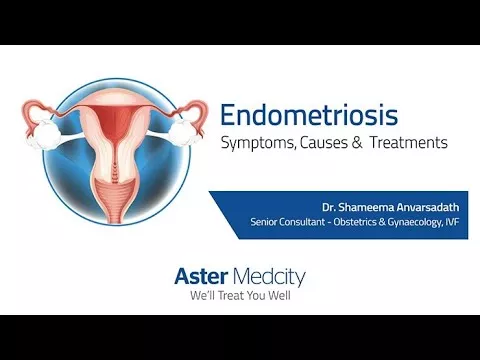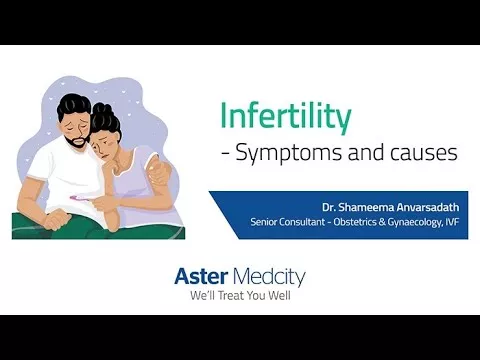The female reproductive system is a marvel of nature, comprising a complex network of organs, hormones, and processes. While the female reproductive system is designed to facilitate reproduction, various factors can influence fertility. Age is a crucial factor since, as a woman enters her early 30s, her fertility gradually declines, with a more noticeable decline occurring in her late 30s and 40s. Hormonal disorders, underlying illnesses (such polycystic ovary syndrome or endometriosis), lifestyle decisions, and environmental factors are some additional risk factors. It's essential for women to be aware of these factors and seek appropriate guidance when planning for pregnancy.
The World Health Organization has released an estimate that at least one in six people in the world is facing infertility problems. 17.5 percent of the global population suffers from it. The report released by the World Health Organization in April was based on 12,241 records from studies conducted around the world.
Whether the reason for childlessness is male or female. As a reflection of our social environment, women are the ones who have to bear the blame. Even today many people do not know the truth that infertility can be cured if adequate treatment is sought. For many individuals and couples, the desire to have a child is a cherished dream. However, when faced with difficulties conceiving naturally, fertility treatments can provide hope and open doors to the possibility of parenthood.
What is Infertility?
Infertility is defined as the inability to conceive after one year of natural intercourse. Men and women are equally involved in the causes of infertility. Pregnancy may also be delayed due to other unknown reasons. Generally, the chance of conceiving within one month of intercourse is 20 percent. This becomes 70 percent within six months, 85 percent within a year, 90 percent within a year and a half and 95 percent within two years. Infertility can also lead to major psychological problems. Causing at least some people to be pushed into great trauma.
Causes of Female Infertility
Different reasons lead to infertility in everyone. Reasons for infertility in women range from age, ovulation problems, fallopian tube related problems, fibroids (tumors in the uterus), endometriosis, etc. This can be solved through treatments like IUI and IVF.
Age is a Villain
In recent years the average age of marriage has increased and most girls are getting married between 25 to 30. Although this helps them to become independent , it is preferable not to postpone pregnancy. Aging affects ovulation and after 35, the pregnancy rate in women tends to decrease. This is because there is less chance of having fully developed healthy eggs. Sexual aversion also sets in for women as they get older. Additionally, late pregnancy contributes to genetic disorders in children, such as Down syndrome. Furthermore, there is a substantial likelihood of miscarriage.
Ovulation Disorders
Normally, one egg is released from the ovary into the uterus in each menstrual cycle. But missed ovulation and irregular periods can affect pregnancy. PCOD and obesity can cause this. Losing 5 to 10 percent of body weight in obese people can facilitate ovulation without the help of drugs and thereby resolve infertility. PCOD (Polycystic Ovarian Syndrome), which are cysts on the ovaries, can be treated with exercise, dietary changes, and reducing stress. However, treatment to increase ovulation can sometimes lead to over-ovulation.
Issues with fallopian tubes
The egg travels from the ovary to the uterus through the fallopian tubes. Conception takes place at this location where the ovum and sperm connect. The process of conception may be hampered by tube blockage. This is brought on by the buildup of secretions near the tube. A canalization procedure can remove an obstruction that is at the start. If not, medical intervention, including IVF, will be needed. Pregnancy will happen if at least one of the two tubules is open and the ovum is moving properly.
Fibroids
Infertility is sometimes caused by non-cancerous growths in the uterus and lack of strength in the uterus. Fibroids occur in 20 to 50 percent of women. Its overgrowth can lead to infertility. Submucous fibroids larger than 4 cm and intramural fibroids are dangerous. By removing these, pregnancy becomes possible.
Endometriosis
The endometrium is the lining inside the uterus. Endometriosis is a condition where similar cells grow outside the uterus. This condition interferes with the fusion of egg and sperm thus causing infertility. This can lead to excessive bleeding, lumps and swelling. These can be surgically removed but there is a risk of damage including to the ovaries. When taking medication, start with a low dose and increase it.
Don't worry, there are artificial insemination methods!
Fortunately, advancements in medical technology have paved the way for a range of fertility treatments that offer solutions for many couples struggling to conceive.
Exercise, nutrition, and lifestyle modifications can help with certain causes of infertility, but they cannot help with all of them. Artificial insemination techniques may be used in such circumstances. These procedures are referred to as assisted reproductive techniques. Among these are IUI, IVF, ICSI, and donor IVF, to name a few.
Freezing Eggs
This option allows women to preserve their fertility by retrieving and freezing their eggs for future use. It is more common in women aged 25-35. The main advantage of this is that one can get pregnant when they are ready to without worrying about the biological clock. Cryopreservation after 35 may not provide the expected benefit.
Intrauterine Insemination (IUI)
Intrauterine Insemination (IUI) IUI is a method of direct injection of male semen into the uterus during the woman's fertile period. Only the best, healthy and fully developed sperm from the collected semen are used for insemination. This procedure enhances the likelihood of sperm reaching the fallopian tubes and fertilizing the egg. If it is not successful after two or three attempts, it is better to seek higher assisted treatments like IVF.
In Vitro Fertilization (IVF)
It is one of the most effective artificial insemination methods. In this method eggs and sperm are artificially combined and grown outside the body. The embryo created by artificial fertilization in the lab is placed in the uterus. IVF is used in cases of infertility due to unknown causes, blockage in fallopian tubes, failure of medication and IUI.
Intra Cytoplasmic Sperm Injection (ICSI)
It is a treatment method in which a single sperm is injected into an egg and is effective for those with low sperm count.
The Treatments are Safe…
Artificial insemination does not pose any health problems. As with any other treatment, certain road blocks may be encountered during the various stages of treatment.
Allegations such as babies born through this method have genetic diseases are also false. The risk of genetic disorders in assisted reproduction is the same as with natural conception. It's just possible for children to naturally exhibit their parents' genetic issues.
About 30-40 percent of women undergo IVF may see a positive result in the first stage of their treatment That is one in three. If the expected results are not obtained in the first phase, some people stop the treatment or seek other centers. This is not right. The couple must have the mindset to continue the treatment until the problems are identified and resolved.
The physical and mental health of those seeking treatment is also important
When seeking treatment for any diseases, the physical and mental well being of the patients and their lifestyle are paramount. Make sure to follow the doctors' instructions. Ask the health experts directly about all the doubts and concerns, and if you ensure the full support of the family and the full cooperation of the partners, you can overcome infertility and move towards parenthood.
As technology continues to advance, the field of female and male fertility treatments evolves, offering new avenues for overcoming infertility challenges. By understanding these options and working closely with medical professionals, individuals and couples can navigate the path towards parenthood and embark on an extraordinary journey of love and fulfilment.















